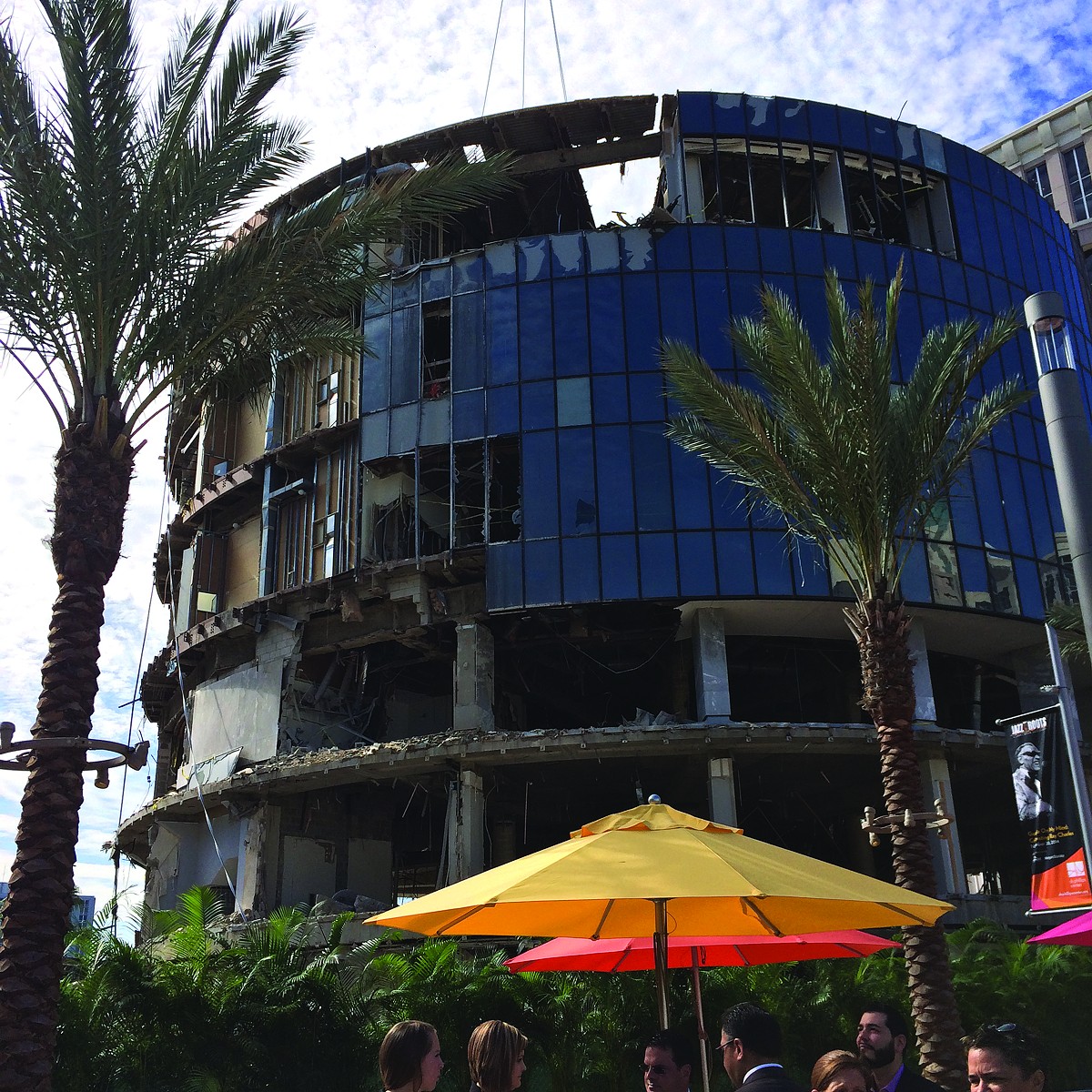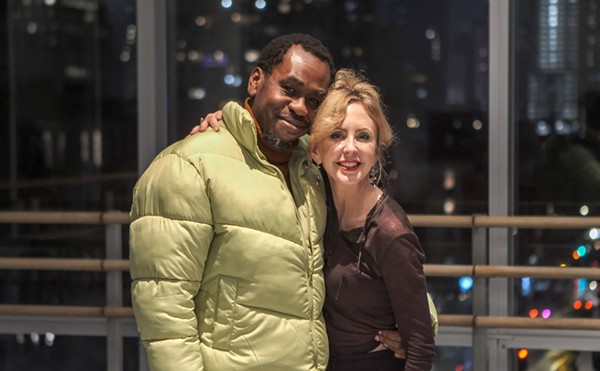The opening of vintage hardware store Hinge on North Orange Blossom Trail may have been a bellwether that in 2014, it became hip to be historic in Orlando. Unfortunately, Hinge's salvation-savvy customer base is battling rampant bulldozerism. Architectural preservation is a boutique industry, with a lot of losses this year and demolition permit fees fattening municipal coffers throughout Central Florida, but hope may be found in the emerging local trend of saving and reusing our building stock rather than flattening it.
The loss of downtown's unique Round Building was a sort of slow-motion Shakespearean tragedy, ending in a rather gruesome public drawing and quartering that is still going on. Don't worry, they saved the good bits in a government warehouse somewhere, in a box next to the lost Ark of the Covenant.
Next up: The loss of Winter Park's Mount Vernon Inn – though it wasn't an architectural gem – is symbolic of our urgent desire to get rid of anything in the way of money. The motel's mildly corny midcentury ranch charm will be replaced by ... more restaurants and shops! Just what we needed.
Speaking of Winter Park, many of its historic homes find themselves trapped between rising land values and low interest rates. Get up there and take a windshield tour of the residential architecture, some of it dating back to the 1880s, "while you still can," says Betsy Owens, executive director of the Friends of Casa Feliz. "Once these houses are gone, they're gone," she says. "I don't think Winter Park wants to be known as the city that used to have a lot of historic charm." Owens, obviously, cares about this stuff, and so do a rising group of developers, realtors and homeowners who see value in the old heavy timber, cast iron and wavy glass made in America, once upon a time.
In quaint Gotha, Nehrling Gardens – once home to a pioneering Florida horticulturist – is now blossoming into a very cool lakeside garden and 1890s residence-turned-classroom and plant laboratory, thanks to a passionate group of volunteers led by Windermere's Angela Withers. "Why re-create historic sites in theme parks when we can preserve and reuse the real thing – in its authentic setting?" she asks rhetorically.
Another who cares, Christine Madrid French, helped a team move the Capen House, the 1885 Winter Park home of one of Orlando's first railroad developers. It was cut in half and barged across the lake, and now it's sited on the grounds of the Albin Polasek Museum and Sculpture Gardens. At the Casa Feliz Christmas party, I ask whether she sees this as a victory. "Well, sort of," she says. "We saved the house, but lost the context. But," she motions to the children milling around waiting to sit on Santa's lap, "at least they'll get to enjoy it, and a hundred years from now it won't much matter that it moved."
2015 promises more demo permits and more preservation activity too, thanks to a nascent Orange County movement started by a few more who care about saving older buildings. That's the thing about historic preservation: Either you care, or you don't. If you care, it's with an eye to future generations and the architectural heritage they'll get to enjoy; if you don't, you have your own wallet to care about. But more and more people are caring about those kids and their wallets too. And Hinge, while the inventory lasts, still has plenty of customers.


















